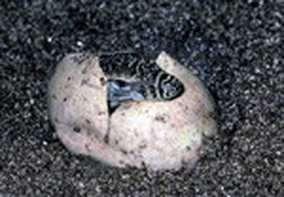Komodo’s Character, Skills, and Uniquences
• The Komodo dragon (Varanus komodoensis), also known as
the Komodo
monitofound in
the Indonesian islands of Komodo, Rinca, Flores, Gili
Motang, and Padar. is a large species
of lizard A member
of the monitor lizard family Varanidae, it is the largest living species of lizard, growing to a maximum length of 3 metres (10 ft) in rare cases and weighing up to approximately 70 kilograms (150 lb).
• As a result of their size, these lizards dominate the ecosystems in which they live. Komodo dragons hunt and
ambush prey including invertebrates, birds, and mammals. It has been claimed
that they have a venomous bite; there are two glands in the lower jaw which
secrete several toxic proteins. The biological significance of these proteins is
disputed, but the glands have been shown to secrete an anticoagulant.
Komodo dragon group behaviour in hunting is
exceptional in the reptile world. The diet of big Komodo dragons mainly
consists of deer, though they also eat considerable amounts of carrion. Komodo
dragons also occasionally attack humans.
•Scientific
classification
•Kingdom: Animalia
•Phylum: Chordata
•Class: Reptilia
•Order: Squamata
•Family: Varanidae
•Genus: Varanus
•Subgenus: Varanus
•Species: V. komodoensis
• Mating begins between May and August, and the eggs are laid in
September. About 20 eggs are deposited in
abandoned megapode nests or in a self-dug nesting
hole. The eggs are incubated for seven to eight months, hatching in April,
when insects are most plentiful. Young Komodo dragons are vulnerable and therefore
dwell in trees, safe from predators and cannibalistic adults. They take 8 to 9 years to mature, and
are estimated to live up to 30 years.
• Komodo dragons
were first recorded by Western scientists in 1910. Their large size and fearsome reputation make them popular zoo
exhibits. In the wild, their range has contracted due to human activities, and
they are listed as vulnerable by the IUCN. They are protected
under Indonesian law, and a national park, Komodo National Park,
was founded to aid protection efforts.
Komodo's Lifecycle
•Firstly,
Female Komodo dragons lay an average of about 20 to 25 soft, leathery eggs in
September, The eggs incubate
for about 8 - 9 months during the wet season and after laying her eggs she
never returns her nest.
•And
then, Komodo hatchlings are on average about
30 - 40 cm long and
weight about 100 grams at birth. They spend their first year in trees. They have a
long, thin body and a proportionally longer tail than that of adults, an
adaptation to living in trees. They reach maturity at about 5 years, by which time they
can weight 25kg and reach 2m
long.
•
Lastly, Adult komodo dragons
reach up to 10 feet long and can weight up 300 pounds.
source :
https://en.wikipedia.org/wiki/Komodo_dragon
https://komododragon2.weebly.com/life-cycle.html



Komentar
Posting Komentar